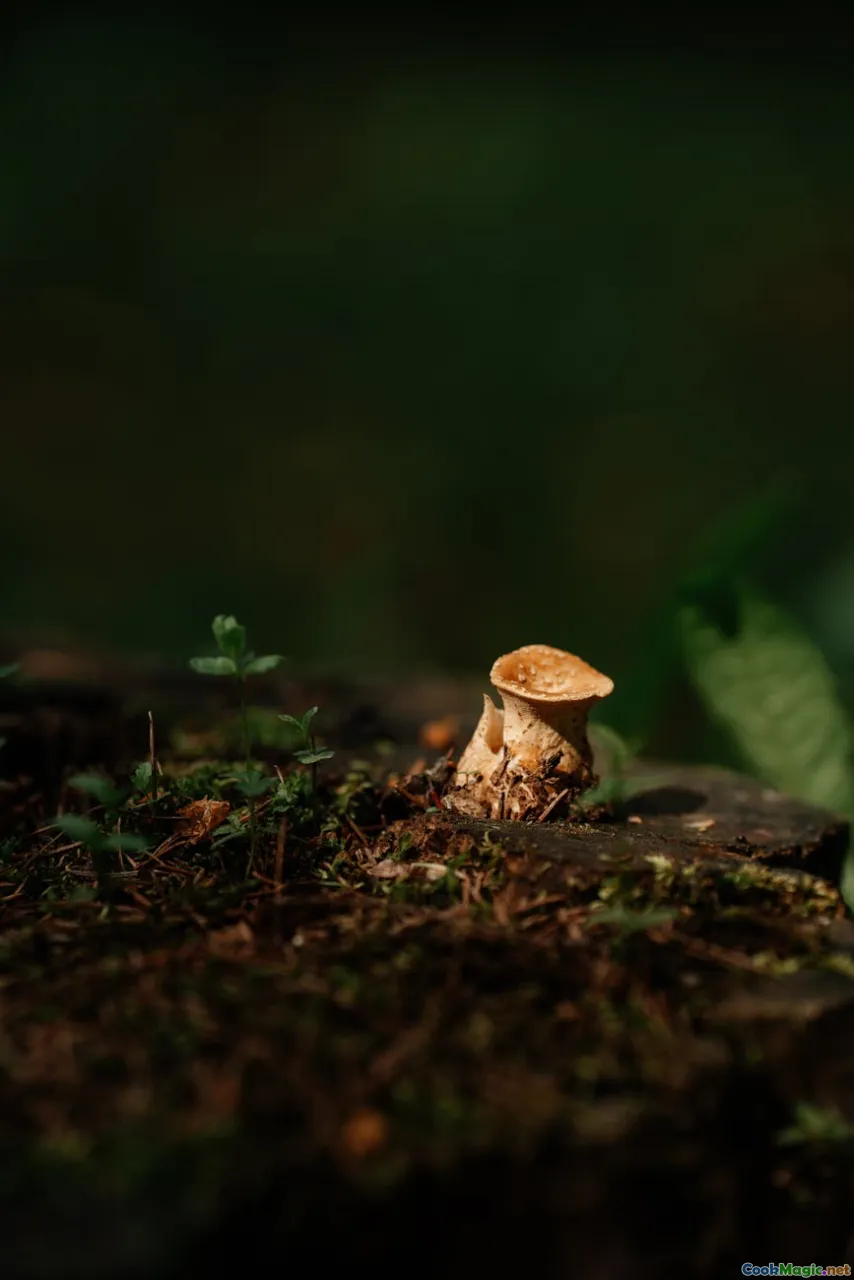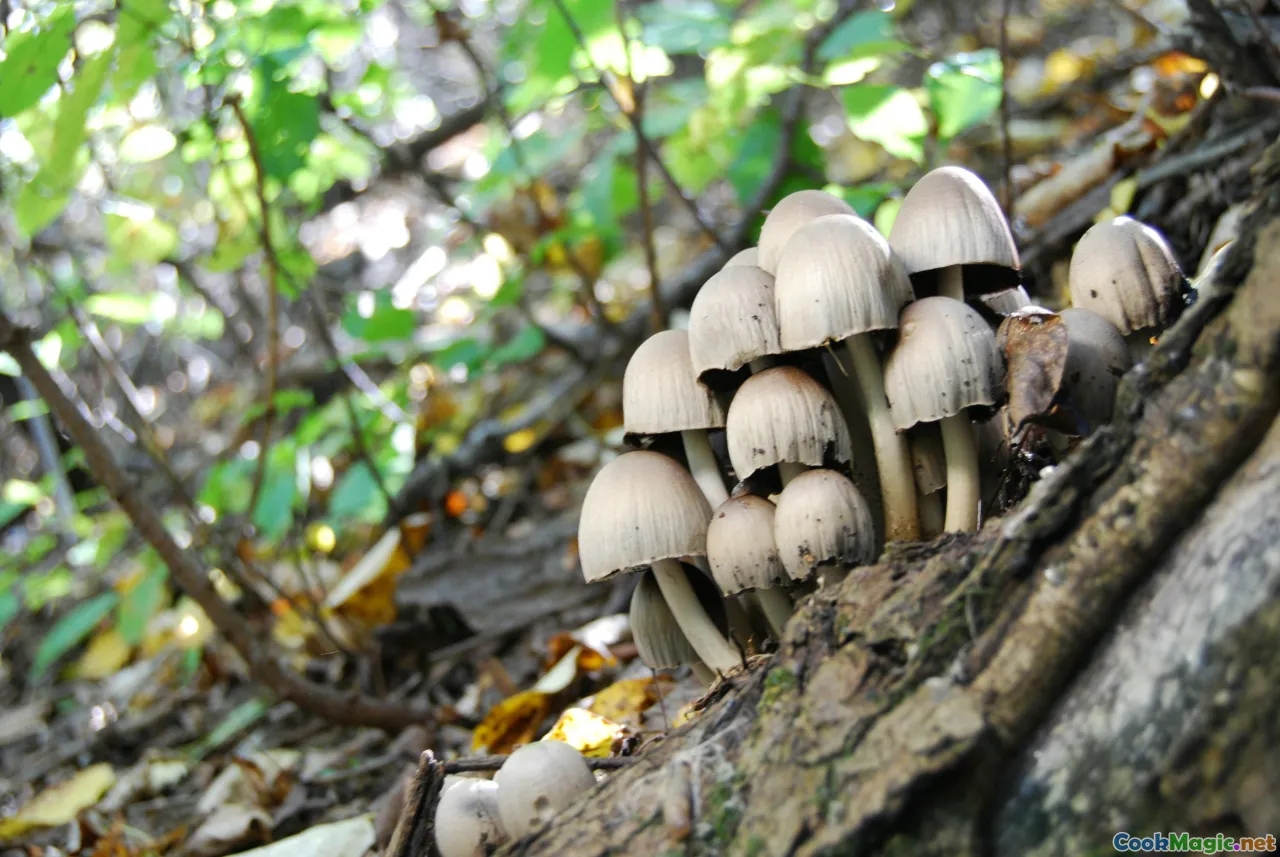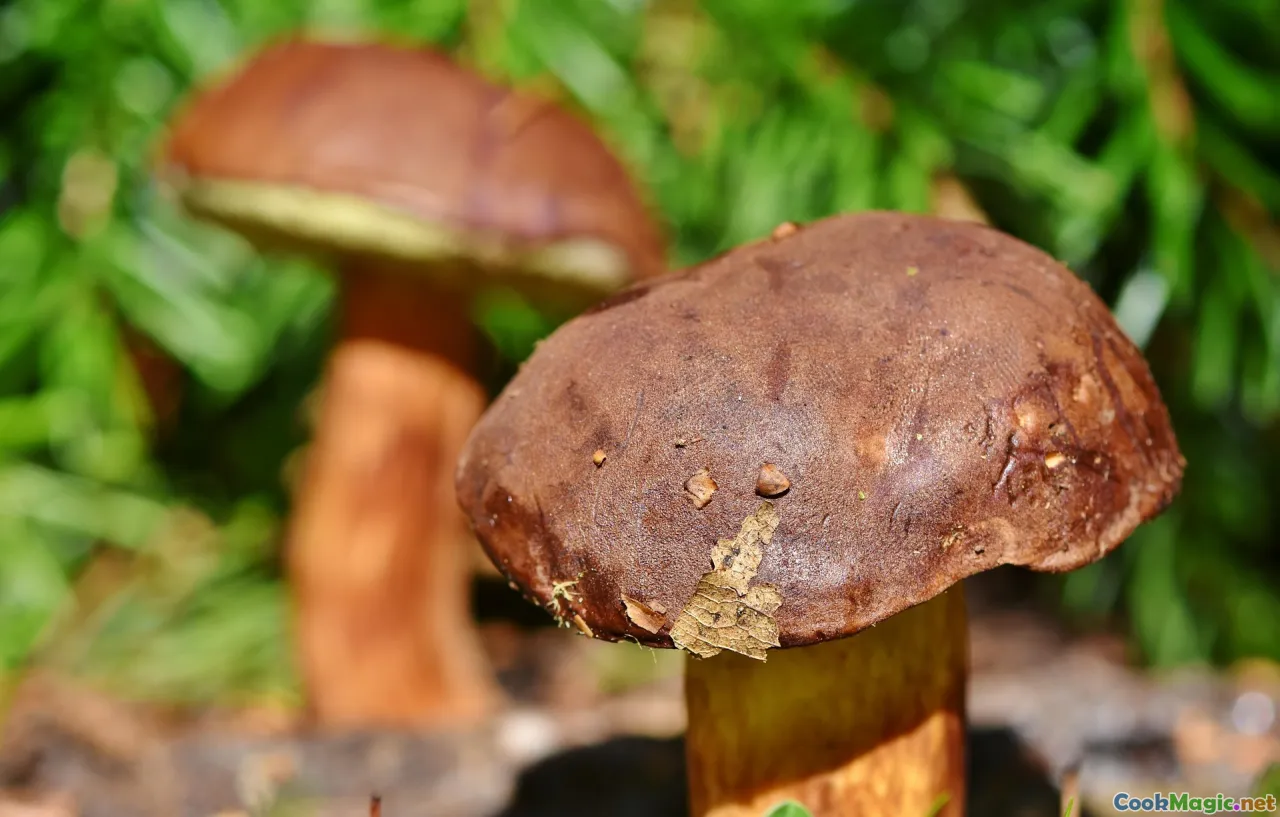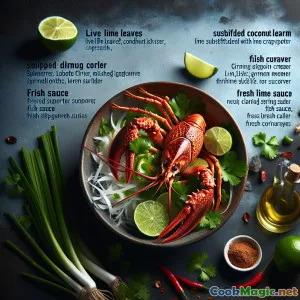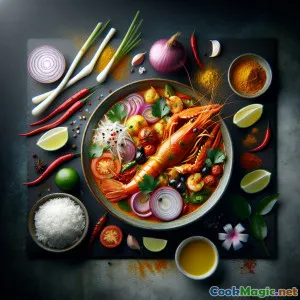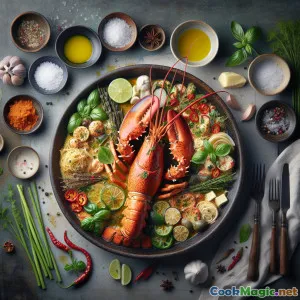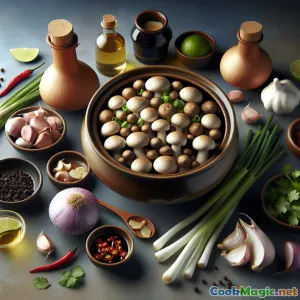
Rustikaler Baining-Waldpilz-Tontopf-Genuss
(Rustic Baining Forest Mushroom Claypot Delight)
(0 Bewertungen)0
1,376
Juli 08, 2025
Problem melden
Zutaten
-
400 grams Gemischte wildwüchsige Waldpilze
(Gereinigte und gehackte Pilze – Shiitake, Austernpilze, Chanterelle oder lokale Wildvarianten)
-
1 piece Kleefass
(Zum Kochen und Servieren – falls nicht verfügbar, verwenden Sie einen schweren Gusseisen topf)
-
2 cm Frischer Ingwer
(Dünn geschnitten)
-
3 pieces Knoblauchzehen
(Gehackt)
-
2 medium Schalotten
(Dünn geschnitten)
-
3 stalks Frühlingszwiebeln
(Gehackt, Weiße und Grüne getrennt aufbewahren)
-
3 tbsp Sojasauce
(Leichtes Sojasoße für einen dezenten salzigen Geschmack verwenden)
-
500 ml Gemüsebrühe
( Bevorzugt hausgemacht oder mit wenig Natrium)
-
1 tbsp Sesamöl
-
10 grams Frischer Koriander
(Gehackt - Garnierung)
-
1 tbsp Limettensaft
(Frisch gepresster Saft, zum Abschließen)
-
1 tsp Chili-Flocken
(Optional – für milde Schärfe)
-
2 tbsp Kochöl
(Neutrales Öl wie Rapsöl oder Pflanzenöl)
(Gereinigte und gehackte Pilze – Shiitake, Austernpilze, Chanterelle oder lokale Wildvarianten)
(Zum Kochen und Servieren – falls nicht verfügbar, verwenden Sie einen schweren Gusseisen topf)
(Dünn geschnitten)
(Gehackt)
(Dünn geschnitten)
(Gehackt, Weiße und Grüne getrennt aufbewahren)
(Leichtes Sojasoße für einen dezenten salzigen Geschmack verwenden)
( Bevorzugt hausgemacht oder mit wenig Natrium)
(Gehackt - Garnierung)
(Frisch gepresster Saft, zum Abschließen)
(Optional – für milde Schärfe)
(Neutrales Öl wie Rapsöl oder Pflanzenöl)
Nährwerte
- Portionen: 4
- Portionsgröße: 1 Schüssel (ca. 300 g)
- Calories: 220 kcal
- Carbohydrates: 18 g
- Protein: 7 g
- Fat: 12 g
- Fiber: 6 g
- Sugar: 4 g
- Sodium: 450 mg
- Cholesterol: 0 mg
- Calcium: 40 mg
- Iron: 2 mg
Anweisungen
-
1 - Zutaten vorbereiten:
Reinigen, hacken und trennen Sie die Pilze in mundgerechte Stücke, schneiden Sie Ingwer, Schalotten in Scheiben und hacken Sie den Knoblauch. Schneiden Sie Frühlingszwiebeln, wobei Sie Weiß- und Grünteile getrennt aufbewahren.
-
2 - Aromaten Anbraten:
In einem Tonschüssel oder schweren Topf das Kochöl bei mittlerer Hitze erhitzen, dann Ingwer, Knoblauch, Schalotten und die weißen Teile der Frühlingszwiebeln hinzufügen. Anbraten, bis es duftet und durchsichtig ist.
-
3 - Pilze kochen:
Geben Sie die gemischten Waldpilze in den Topf und braten Sie sie etwa 5 Minuten lang an, bis sie ihre Feuchtigkeit freisetzen und leicht bräunen.
-
4 - Brühe hinzufügen und köcheln lassen:
Gießen Sie die Gemüsebrühe und Sojasoße hinein, umrühren, um alles zu vermengen. Den Topf abdecken, die Hitze auf niedrig reduzieren und die Pilze 20-25 Minuten köcheln lassen, um intensive Aromen zu entwickeln. Gelegentlich umrühren.
-
5 - Abschließende Würzung und Garnitur:
Sesamöl, Limettensaft und Chilipulver (falls verwendet) unterrühren. Bei Bedarf die Würze anpassen. Vor dem Servieren mit gehackten grünen Teilen der Frühlingszwiebeln und frischem Koriander garnieren.
Reinigen, hacken und trennen Sie die Pilze in mundgerechte Stücke, schneiden Sie Ingwer, Schalotten in Scheiben und hacken Sie den Knoblauch. Schneiden Sie Frühlingszwiebeln, wobei Sie Weiß- und Grünteile getrennt aufbewahren.
In einem Tonschüssel oder schweren Topf das Kochöl bei mittlerer Hitze erhitzen, dann Ingwer, Knoblauch, Schalotten und die weißen Teile der Frühlingszwiebeln hinzufügen. Anbraten, bis es duftet und durchsichtig ist.
Geben Sie die gemischten Waldpilze in den Topf und braten Sie sie etwa 5 Minuten lang an, bis sie ihre Feuchtigkeit freisetzen und leicht bräunen.
Gießen Sie die Gemüsebrühe und Sojasoße hinein, umrühren, um alles zu vermengen. Den Topf abdecken, die Hitze auf niedrig reduzieren und die Pilze 20-25 Minuten köcheln lassen, um intensive Aromen zu entwickeln. Gelegentlich umrühren.
Sesamöl, Limettensaft und Chilipulver (falls verwendet) unterrühren. Bei Bedarf die Würze anpassen. Vor dem Servieren mit gehackten grünen Teilen der Frühlingszwiebeln und frischem Koriander garnieren.
Mehr über: Rustikaler Baining-Waldpilz-Tontopf-Genuss
Baining-Waldpilz-Tontopf: Eine kulinarische Verbindung zur Natur
Das Rezept des 'Baining-Waldpilz-Tontopfs' schöpft Inspiration aus den indigenen Gemeinschaften der Baining in Papua-Neuguinea, die für ihr tiefes Leben im Waldökosystem bekannt sind.
Dieses Tontopfgericht fängt die Essenz der wilden Waldpilze ein, ein Symbol für Sammeltradition und bodenständige Ernährung. Hergestellt aus verschiedenen wilden Pilzen – von shiitake-ähnlichen Pilzen bis hin zu zarten Pfifferlingen – verwendet dieses herzhafte Gericht aromatische Gewürze wie Ingwer, Knoblauch und Schalotten, die in einer langsam geköchelten, sanften Brühe kombiniert werden, um die Umami-Reichheit und die natürlichen Texturen jeder Pilzart hervorzuheben.
Die Verwendung eines traditionellen Tontopfs, wenn möglich, verbessert die Wärmeverteilung, versiegelt die Aromen und verleiht ein rustikales Esserlebnis, das die Stammes-Geschirrarten aus Ton widerspiegelt und eine immersive kulturelle Esserfahrung schafft. Ein Hauch von Sesamöl und frischer Limette hebt dieses bescheidene Gericht in eine elegante Fusion aus natürlicher Waldfrische und einem leichten asiatisch-pazifischen Twist.
Tipps & Hinweise
- Sammler oder abenteuerliche Köche können versuchen, lokale Waldbewohnerpilze für Authentizität zu beziehen.
- Das Simmern ist entscheidend: Es ermöglicht den Pilzfäden, zart zu werden und sich vollständig mit der Brühe zu verbinden.
- Wenn kein Tontopf zur Verfügung steht, eignen sich gut abgedeckter Gusseisen- oder schwerer Kochtopf.
- Dieses Gericht passt hervorragend zu gedämpftem Jasminreis oder rustikalen Broten.
- Das Hinzufügen einer kleinen Menge frischer Chiliröllchen sorgt für einen angenehmen Kontrast an Schärfe gegen die erdigen Pilze.
Historische und kulturelle Bedeutung
Das Volk der Baining meditiert ihre Beziehung zum Wald durch Rituale und nachhaltige Lebensweisen. Pilze werden respektvoll gesammelt und sind Symbole für die Regenerationszyklen des Waldes. Das Kochen in Ton- oder Tontöpfen ist eine uralte Methode, tief in der menschlichen Kulturgeschichte verwurzelt.
Das Erkunden von Gerichten wie dem 'Baining-Waldpilz-Tontopf' fördert das Verständnis für das indigene ökologische Wissen und das kulinarische Erbe, das die Schätze der Wolkenwälder mit der schlichten Eleganz des pazifischen Inselstils verbindet.
Im Wesentlichen ist dieses Rezept eine köstliche Feier des Wilden – es verwandelt bescheidene Pilze, eingebettet zwischen Erde und Laub, in ein tröstliches, seelenbefriedigendes Fest, das in der Großzügigkeit der Natur verwurzelt ist.

